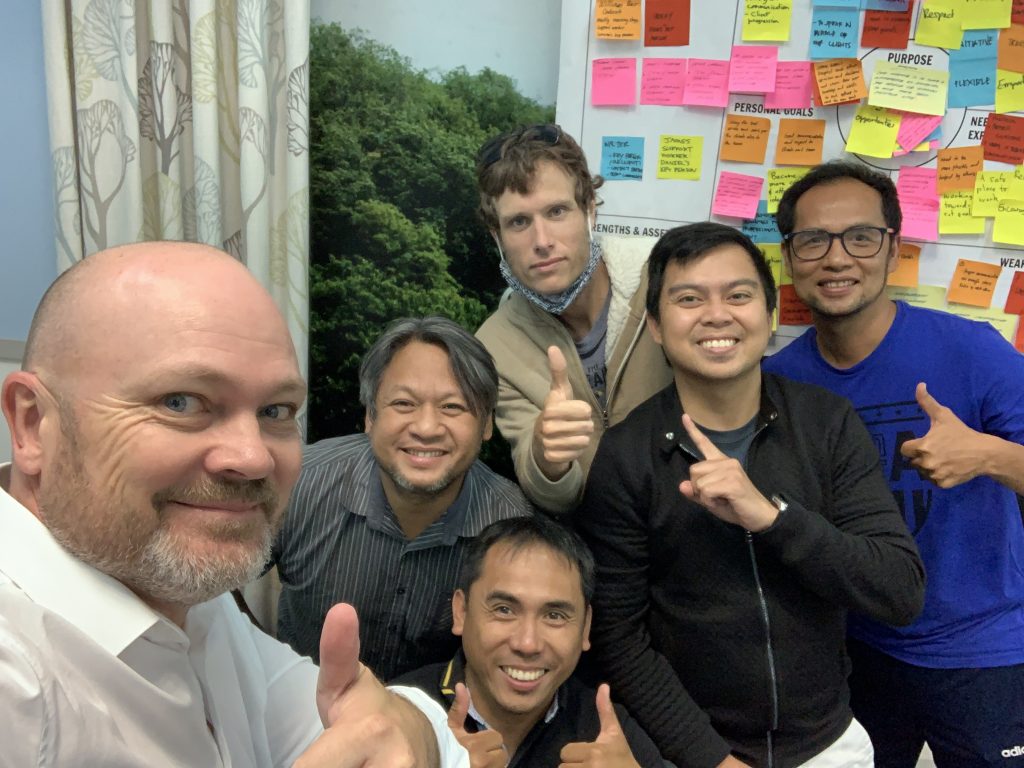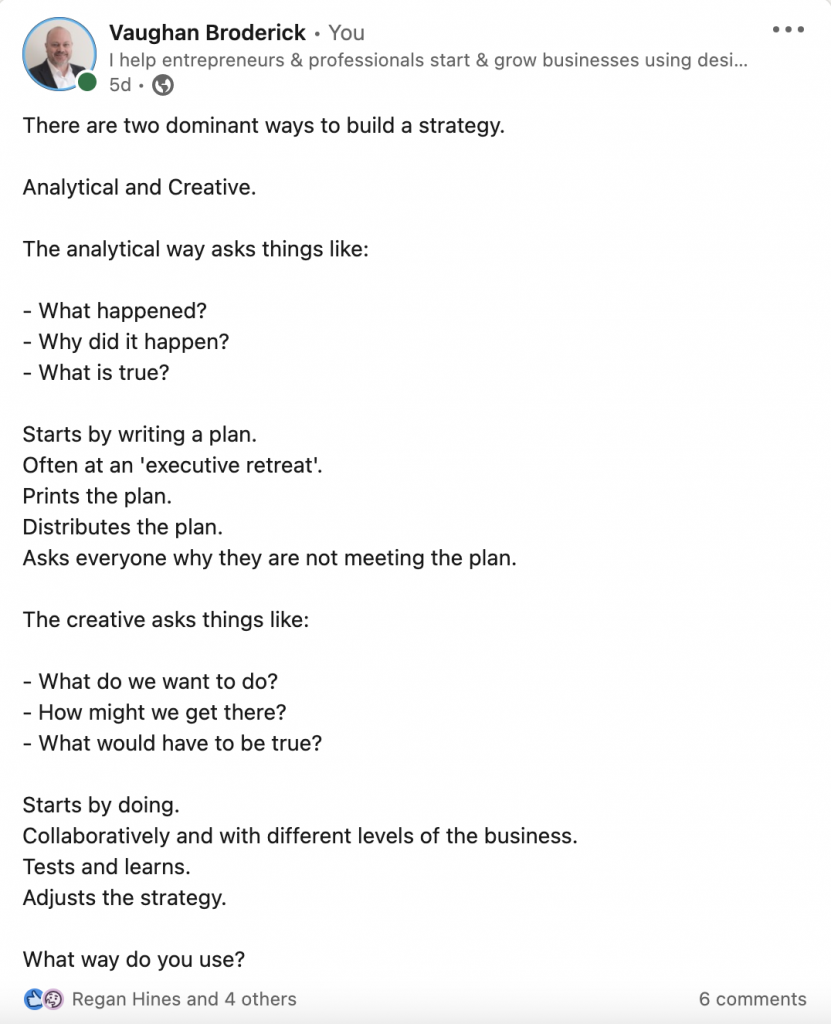Wouldn’t it be great if we all had the same approach to working on projects?
Or that communication is understood in the same way by everyone on the team?
Or that egos didn’t get in the way of team effectiveness?
Right now, millions of frustrated teams are caught in spiralling dysfunctional relationships.
The truth is that it doesn’t have to be that way.
There are proven ways to develop high-performing teams.
Moreover, according to this recent HBR article, the best teams often outperform the best people.
Today, I’m going to share 2 proven frameworks that will help take your innovation team from dysfunctional to high performing:
- The ‘Orming’ Model
- GRPI Model
Plus, 1 step-by-step tool I use to help teams 10X themselves.
If you want better results, focus on your teams.
“Individual expertise.
Is trumped by high-performing teams.
High-performing teams compound the output, rather than being the sum of individual effort.”
Read time: 5 minutes (or less) 👇
Let’s get going!
Framework #1 - The 'Orming' Model

The ‘Orming’ model helps leaders to understand and shape the group and interpersonal dynamics.
The 5 stage model works because team cohesiveness depends on how well the group can relate to each other in each stage.
And each stage is sequential based on the team’s development.
The 5 stages are:
- Forming.
- Storming.
- Norming.
- Performing.
- Adjourning.
Stage 1 – Forming
In the Forming stage, individuals in new teams are trying to understand whether ‘they’ll be accepted or rejected’.
Often playing over in their mind whether they are ‘in or out’.
There will be questions around clarity and purpose, and they’ll be non-committal until they know more.
The hallmarks of the Forming stage might include:
- Some people contribute less than others.
- Quick agreement.
- Low amount of conflict.
Feelings of anxiety are often dominant, particularly if you’re an introvert (like me).
What can help in this stage is that the leader provides sufficient information and direction to give clarity.
And to aim for a base level of trust to move forward.

Stage 2 – Storming
When a team is in the Storming stage, they are working through issues of hierarchy and influence.
And finding where they sit within the hierarchy.
Some people become frustrated at the level of control they have or don’t have.
Or become frustrated with those that just want to get on with it!
Which often leads to competition, conflict and small cliques forming.
Team members may be unable to make decisions, become uncooperative or even challenge the leadership.
They may also get frustrated with the different ways of working.
Mostly, in this stage, people need to answer 2 key questions:
- What do people expect of me?
- What do I expect of other people?
If conflict is not resolved, long-lasting issues and feelings can compound.
Some people may even ‘opt out’ if they are not feeling useful.
Ideally, a leader will take a consultative approach to manage the conflict, clarify roles and ensure everyone is suited to their roles.
Stage 3 – Norming
Once you resolve the issues, the team is likely to become far more cohesive, solve problems better, and increase performance.
Their sense of identity and trust increases and ideas are shared and discussed based on facts.
Feedback is given and received openly.
The opportunity for high creativity follows.
A leader coaches the team during this stage because they perform well, hold effective meetings, and make good decisions together.
Norming is a good place to be.
But, it is not high-performing.
Teams might want to stay here and need to be moved (over many months) into a truly high-performing team.

Stage 4 – Performing
Fantastic, your team is here!
Your team is achieving its goals.
They become more capable of working together and demonstrate ‘mastery’.
People will feel a sense of fulfilment both personally and professionally.
The critical difference in conflict at this stage is over the task rather than power dynamics.
They are a high-performing team.
As a leader, you will see that people will give you all their effort when you help to develop them fully.
Team continuity is essential here. Because if there is high turnover, the team can regress to earlier stages.
Some noticeable characteristics of this stage are:
- High level of voluntary effort and alignment.
- The expectation of success.
- Openness and utilisation of feedback.
- Resources aren’t wasted.
- Innovation is encouraged and sought.
- Roles may be fluid.
- People appreciate each other’s differences.
Stage 5 – Adjourning
So, the project has ended.
Perhaps, the project was a huge success?
Or did you have to pivot the strategy and create a new team?
Some people may feel a sense of loss or other emotions. Sadness? Anger? Hope? Relief?
It’s vital, as a leader, to help the team work through these emotions and acknowledge what is happening.
Otherwise, they may be more reluctant to work with you on the next innovation project.
Framework #2: GRPI Model

As you found out, the ‘Orming’ model helps leaders understand a team’s developmental stage.
And I shared some ways to help in each step.
The 4-step GRPI model (developed by Richard Beckhard) helps leaders work out what they should do to create the foundations at each stage.
They are:
- Goals – What do you want out of work?
- Roles – Who is going to do what?
- Processes – How are you going to work together?
- Interpersonal relationships – Hopefully, you can all get along and work well together?
The most important thing to remember is that team conflict is often because some of the earlier foundation work in the goals or roles needs addressing.
To move past Forming:
- Develop clear, precisely defined goals.
- Create a common purpose and vision.
- Look for the commitment of individual members to the goal.
To move through Storming:
- Provide clarity of formal roles. Informal roles develop over time.
- Ensure that each team member has the skills for the role.
- Structure work so the team can interact productively.
To move through Norming:
- Establish constructive team norms that are enforced adequately.
- Establish accepted processes around good decision-making, problem-solving, effective meetings and conflict resolution.
To help keep a team Performing:
- Establish mutual accountability.
- Foster a safe environment that enables trust and openness.
Top Tips
- Teams can slip back, so keep your awareness up.
- Team size is usually best at around 5 people.
- Get the composition of skills, experiences and competencies right.
- Provide the team with the needed resources.
10X Tool - The Team Canvas

The Team Canvas is what I use to help teams to find common ground, understanding and alignment.
It provides the platform to create discussion and form better team cohesion more quickly.
And it enables a point of reference to become a high-performing team.
Use the canvas periodically or when there have been changes to the team.
Download the free team canvas and use it to start building your high-performing team.
Download the free guide here.
Aim for Good Communication
Not to put a too more delicate point on it.
You probably noticed that the common theme always aims for open, transparent and mutually respectful communication.
The Short of it
- High-performing teams beat individual brilliance.
- Use the ‘Orming’ model to understand where your team is at on its performance journey.
- Use the GRPI model to help the team move through the stages.
- Use the team canvas to start the whole process, to check-in or when new people join the team.
- Focus on open, transparent and mutually respectful communication.
If you enjoyed this newsletter, please share it with 1 other person.
That’s all.
Happy team building!
Let’s achieve together.
🥇 LinkedIn Tip of the Week 🥇

🔥Teamwork Quote🔥
“Talent wins games, but teamwork and intelligence win championships.” – Michael Jordan

